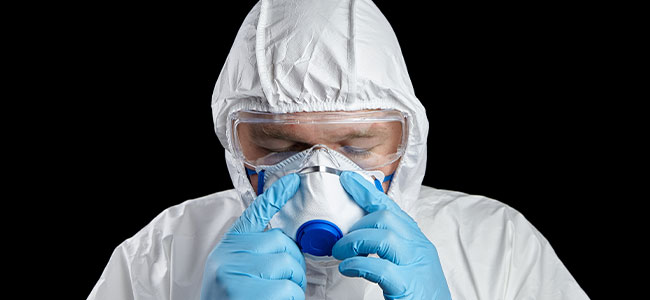
Respirators: Pursuing the Perfect Fit
A NIOSH/NPPTL challenge aims to foster technology that helps improve respirator fit to protect workers from respiratory hazards.
- By David Kopf
- May 01, 2024
Dust. Fumes. Vapors. Particulate. Gases. Workers in many industries wear respirators to protect them from a wide spectrum of dangerous respiratory hazards. That said, their respirators are only as good as their fit. An ill-fitting respirator can result in leaks, significantly reducing its protective capabilities and exposing the worker to harmful substances.
A properly fitting respirator forms a tight seal against the face with no gaps, preventing these hazardous substances from being inhaled and causing health issues, such as respiratory diseases, chemical poisoning, or long-term organ damage. Also, when workers feel confident that their protective equipment is effective, they are more likely to use it consistently and correctly, enhancing the overall safety culture within the workplace.
This is why, in industries such as healthcare, construction, manufacturing, and chemical handling, where the risk of exposure to hazardous substances is high, a well-fitting respirator is essential — and required.
“When respirators are used in the workplace, the Occupational Safety and Health Administration requires that the workplace have a respiratory protection program in place, and part of that respiratory protection program is initial fit testing as well as annual fit testing,” says Maryann D’Alessandro, Ph.D., the Director of the National Personal Protective Technology Laboratory (NPPTL), the research center within the National Institute for Occupational Safety and Health (NIOSH).
However, while many workplaces have these respiratory protection programs in place, there are many instances where those using respirators might not have access to fit testing programs, she adds. (Think of the public during recent events such as the COVID-19 pandemic and wildland fires, for example.)
Also, it’s important to keep in mind that no two faces are the same; people’s faces vary significantly in shape and size, making the need for proper fit all the more universal. So, improving respirator fit and fit evaluation is an evolving endeavor.
Respirator Fit Evaluation Challenge
This is why the NPPTL started the Respirator Fit Evaluation Challenge. A collaboration between NIOSH/NPPTL, Capital Consulting Corporation and the NASA Tournament Lab, the challenge aims to foster the development of innovative and improved methods for assessing the fit of respirators to enhance worker protection. The challenge invites innovators to submit ideas through a multi-phase process, including initial proposal submission, development of prototypes, and final testing, to identify and advance new technologies for respirator fit evaluation.
This article originally appeared in the April/May 2024 issue of Occupational Health & Safety.